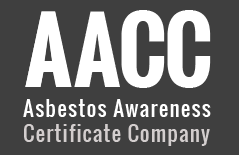
Asbestos Awareness in the Home
What is the Law Relating to Asbestos in Domestic Properties?
When it comes to asbestos in domestic properties, owner-occupiers are not legally responsible for the risks to builders or contractors from asbestos. However, their main responsibility is to ensure they hire competent tradespeople who are qualified and knowledgeable about asbestos management to carry out improvements, repairs, or maintenance on their homes.
Before any work begins, homeowners should inform the tradespeople if there is known asbestos present on the property. This communication is crucial for ensuring the safety of everyone involved in the project.
The general duties outlined in Section 3 (1) of the Health and Safety at Work Act 1974 apply to protect residents from any danger to their health and safety while work is being carried out. In cases where asbestos-containing materials (ACMs) are involved, the Control of Asbestos Regulations 2012 also apply, and it becomes the contractor's responsibility to follow those regulations to ensure asbestos is handled safely.
Are You a Residential Building Owner or Landlord?
If you are a residential building owner or landlord, your responsibilities differ slightly from those of owner-occupiers. The Control of Asbestos Regulations 2012 places a 'duty to manage' asbestos on anyone who has control over the maintenance and repair of non-domestic premises. This means that workplaces, public buildings, and even certain communal areas in residential buildings fall under this regulation.
While private houses and individual flats are not covered by this duty, the communal areas of multi-occupancy buildings, such as purpose-built apartments or converted houses, are included. Examples of such communal areas include:
- Corridors
- Entrance halls
- Stairwells and staircases
- Lifts and lift shafts
- Roof spaces
- Gardens
- Outhouses
- Garages or covered car parks
It’s important to note that the individual flats themselves are not covered by this regulation. However, landlords and building owners are still expected to maintain clear and accurate records of the location, type, and condition of any ACMs in these communal areas. Additionally, they must assess the risks posed by asbestos to anyone working in or using these areas.
Any contractors hired to carry out building maintenance or repairs should be provided with this information. They must be made aware of any materials that contain asbestos and know to inform the appropriate person if they discover or disturb any materials that were not previously identified.
Although the duty to manage asbestos under this regulation does not apply to individual landlords of rented homes, it is considered best practice for landlords to maintain these same high standards to ensure the safety of tenants and contractors.
Who Needs Asbestos Awareness Training?
According to the Health and Safety Executive (HSE), every employer must ensure that anyone likely to encounter asbestos during their work, or individuals supervising those employees, receive an appropriate level of training. This is to ensure that they can work safely and without risk to their health.
Asbestos awareness training is an essential part of this education, providing workers with the knowledge they need to identify, avoid, and safely handle asbestos-containing materials.
Our Asbestos Awareness Courses are designed for workers who may disturb asbestos or materials that contain it. To learn more about who should take asbestos awareness training, visit our Asbestos Awareness Training for Workers page.



